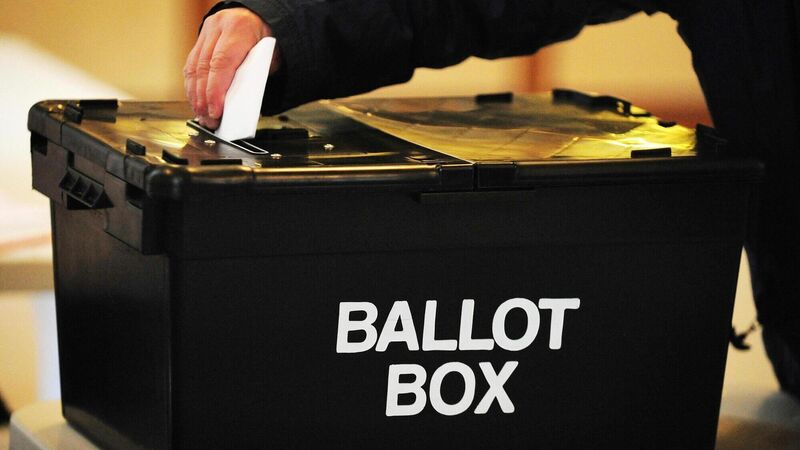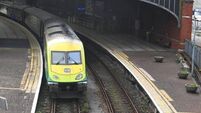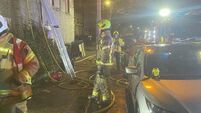Explained: How Ireland's voting system works

Now that President Michael D Higgins has granted the Taoiseach a dissolution of the Dáil and the general election has been called for Friday, November 29, it might not be a bad time to look at the voting system which we have used in this country for over a century, and to look at how we go about voting.
In the Republic of Ireland, we use a voting system called proportional representation with a single transferable vote (PRSTV).
We use this system in local elections, general elections to Dáil Éireann, elections to the European Parliament, and presidential elections.
At its most basic, PRSTV is a system designed to ensure that the percentage of seats a party gets in a parliament or assembly is roughly equal to the percentage of votes it gets in an election.

Each voter has a transferable vote, whereby their vote can go to another candidate in the same constituency if that voter’s first-preference candidate does not require that vote — either because they have already been elected or because they have been eliminated from the count.
The system uses multi-seat constituencies, where each constituency elects multiple candidates — except in presidential elections — and elections are carried out across electoral districts, which vary in size depending on the election.
In local elections, the constituencies are local electoral areas (LEAs) into which counties or cities are divided, which elect various numbers of councillors.
For European elections, we have three constituencies: Dublin, which has four seats; Ireland South, which has five; and Ireland Midlands-North-West, which also has five seats.
In Dáil constituencies, the Constitution specifies that the minimum number of TDs returned per constituency is three, but does not define the maximum number. Electoral law does specify a maximum number of five TDs.
According to Article 16.2 of the Constitution, there must be a TD for every 20,000-30,000 people, a ratio that is calculated across the country as a whole but which must be balanced ‘so far as it is practicable’.
Census 2022 recorded a population of almost 5.15m people, and with 160 TDs, that meant one TD for every 32,182 people.
Last year, the Electoral Commission recommended that the number of TDs be increased to 174, meaning that there would be a TD for every 29,593 people, which would be just within the boundaries of the constitutional limits.
These recommendations come into effect in this general election, which in Cork will result in the two city constituencies becoming five-seaters.
(It’s a matter for another day, but with the population increasing as it is, we will inevitably have to revisit this. In fact, the commission chairperson, Supreme Court judge Marie Baker, quipped at the time that: “The population is increasing at a rate of two TDs a year.” We will either have to increase the number of TDs again, and probably soon, or we may have to consider a constitutional amendment to Article 16.2.)
Where an individual will vote in an election is determined by where they are registered to vote.
For example, if you live on Shandon St and are registered to vote as living there, your vote in the local elections was in the Cork City North West ward, while your vote in the general election will be in Cork North Central.
In the presidential election, there is one group of candidates which will be voted for by people in constituencies all across the country. The next presidential election is due by October 2025.
The place where you vote is called a polling place, and that is usually in a local school or community centre, and it is assigned to you, meaning you can only vote in that one place.
A polling paper — sometimes called a polling card — will be posted to you ahead of the election, and that will tell you where your polling place is.
In the North, the PSTV system is also used, in the Assembly and local council elections, but, notably, not in general elections to the UK’s Westminster parliament (See story above right).
How does PRSTV work?
Our voting system, PRSTV, means you can vote for multiple candidates, ranked by preference.
This means you rank the candidates you want to vote for, going from your first preference, whom you select by writing ‘1’ next to them, to your second preference, by writing ‘2’, and so on (See the voting guide on opposite page).
Your vote can be transferred from one candidate to another depending on your preferences on the ballot paper.
Effectively, you are saying that your vote goes to your No.1 candidate, but if that candidate does not need your vote because they have been elected or excluded, then your vote transfers to your No.2 candidate, and so on.
Only one of your preferences is active at a time, and your vote stays with your first-preference candidate unless and until they no longer need it (either because they have been elected and your vote has become one of their surplus votes, or the candidate has been excluded from the count).
Candidates are elected by reaching the quota.
The quota is the total number of valid votes divided by the total available seats, plus one seat; one is then added to this number, and if there is any remaining fraction in the calculation, it is disregarded.
For example, if a four-seat constituency has 26,017 valid votes, then 26,017 votes would be divided by five (four seats plus one seat), giving 5,203.4. One is then added to this number, giving 5,204.4, and the fraction 0.4 is disregarded, resulting in a quota of 5,024. If a candidate reaches the vote quota on a count, they are deemed elected.
How do transfers work?
Under PRSTV, your vote may be counted multiple times across several counts.
At the end of each count, the count rules are reviewed and the course of action to be taken at the next count is determined. This might mean the distribution of a surplus of votes belonging to a candidate, or it might be the exclusion of one or more candidates together.
Candidates who get enough first-preference votes on the first count to meet the quota are automatically elected.
The candidate who is first to be elected, because they had the most votes, is deemed to have topped the poll.
The extra or ‘surplus’ votes of elected candidates may then be re-distributed to each voter’s next available choice. There are detailed rules around the decision that a surplus should be transferred.
Votes that are transferred from one candidate — either because that candidate been elected or eliminated — to another are called, naturally enough, transfers.
If those transfers result in another candidate being elected, the process is repeated until all seats are filled or there are no extra votes.
Candidates with the lowest numbers of votes are excluded, and all of their votes are transferred to the next preference that is available on each ballot paper in the same way a surplus is.
This process continues until all the available seats are filled.
Sometimes, candidates who don’t make the quota can still be elected.
For example, if there are three seats in a constituency, and only two have made quota after numerous rounds of counting votes and excluding candidates, the remaining candidate with the highest number of votes gets the final seat.
More in this section










 App?
App?





